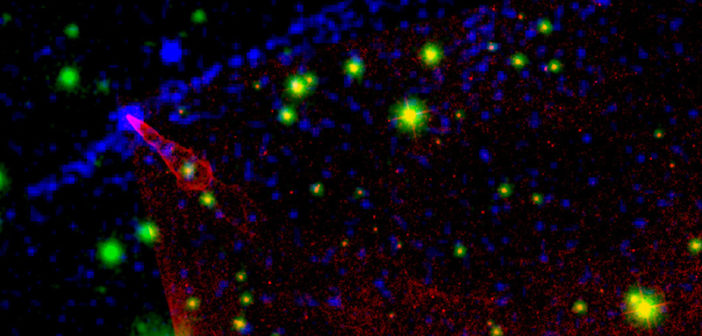Roughly 2,700 light-years from Earth, a pulsar streaks across space at a blistering 765 kilometers per second. Its rapid motion through the interstellar medium creates a variety of structures, including the aptly named Guitar Nebula — an ever-expanding bow shock that billows in the pulsar’s wake, resembling the narrow head, long neck, and wide body of a guitar — and a filament that shines in X-ray light. In a recent publication, Martijn de Vries (Stanford University) and collaborators presented new Hubble Space Telescope and Chandra X-ray Observatory images of the pulsar and its surroundings, gaining a fresh perspective on a region that has been observed for more than 25 years. The new optical and X-ray data, combined with observations from the Panoramic Survey Telescope and Rapid Response System into the composite image shown above, allowed the team to analyze the subtle evolution of the Guitar Nebula. Among other changes, the team observed a ridge of bright emission moving through the X-ray filament, which they attributed to an injection of electrons and positrons decades ago. To learn more about the latest investigation of the Guitar Nebula — and to see the full version of the image above — be sure to check out the article below!
Citation
“A Quarter Century of Guitar Nebula/Filament Evolution,” Martijn de Vries et al 2022 ApJ 939 70. doi:10.3847/1538-4357/ac9794

